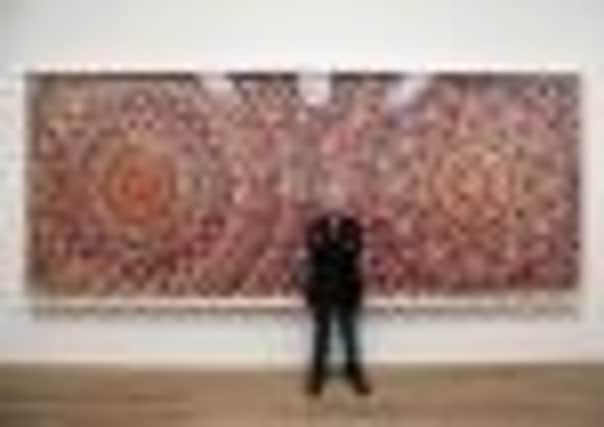The weird and wonderful world of Damien


The items can be snapped up at Tate Modern’s highly- anticipated show, which opens just days after a critic and former curator urged owners of Hirst’s work to sell quickly before “the penny drops”.
The show, entitled Damien Hirst, features some new work in the form of diamond and butterfly-decorated wallpaper, and highlights from the 46-year-old’s phenomenally successful career.
Advertisement
Hide AdAdvertisement
Hide AdHirst’s installation In And Out Of Love is shown for the first time since its creation in 1991, comprising a room full of live butterflies, feeding on sugar water and fruit which visitors are advised to go through at a “steady, slow pace”, next to an adjoining room of dead butterflies on monochrome canvases.
Visitors will be assaulted by the smell of dying flies and a rotting cow’s head in A Thousand Years (1990), where flies emerge from maggots, eat from the animal’s head and die on an Insectocutor.
For The Love Of God, the human skull covered in 8,601 flawless diamonds – the work Hirst is most proud of – is on display at Tate Modern’s Turbine Hall, with its own security.
The retrospective also features a shark suspended in formaldehyde in The Physical Impossibility of Death In the Mind Of Someone Living (1991), Hirst’s largest spot painting, Pharmacy (1992), an installation of medicine bottles, spin paintings, and hundreds of used cigarettes in a giant ashtray in Crematorium (1996). At the end of the exhibition, which opens on Wednesday, visitors can spend £700 on a limited edition roll of butterfly wallpaper, or £36,800 on a plastic skull decorated with “household gloss” in the style of one of Hirst’s spin paintings.
Other objects on sale include a butterfly-print deckchair for £310, and a spot painting-style skateboard “stamped with signature” for £480.
Hirst said he had been asked to do a retrospective since he was 28, but had previously shied away from the idea.
“I think I was avoiding it because I was afraid of it in some ways,” he said.
He also defended his work following criticism from critic and former curator Julian Spalding, who described conceptual art as “con art”.
“People don’t like contemporary art but all art starts out as contemporary,” Hirst said.